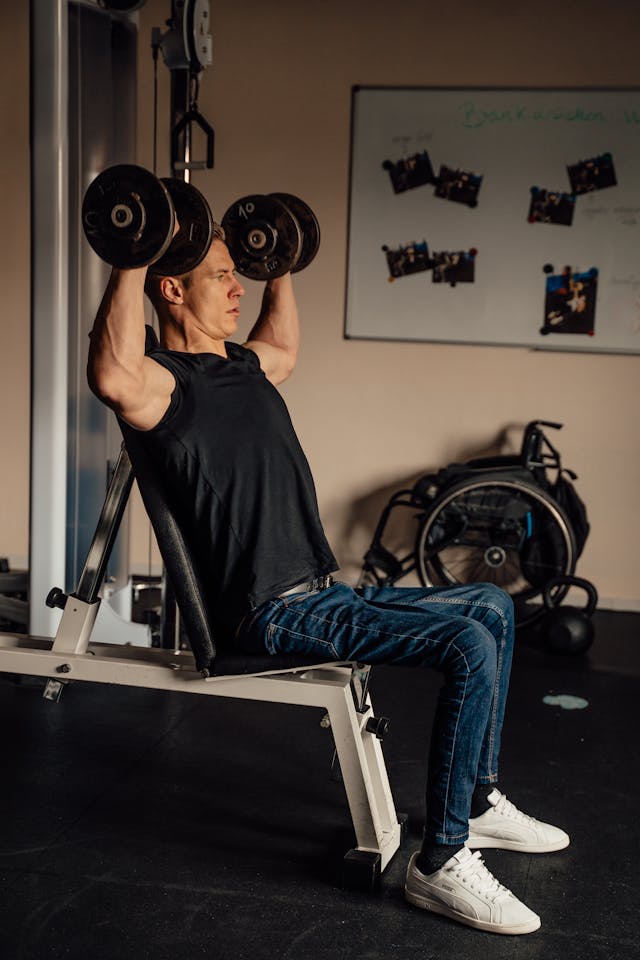
Seated dumbbell shoulder press vs standing barbell shoulder press
The seated dumbbell shoulder press and the standing barbell shoulder press are both effective exercises for building shoulder strength and muscle, but they have some key differences:
The seated dumbbell shoulder press and the standing barbell shoulder press are both effective exercises for building shoulder strength and muscle, but they have some key differences:
1. Position and Stability
- Seated Dumbbell Shoulder Press: Performed while seated, usually on a bench with back support. This position provides more stability, allowing you to focus purely on the shoulder muscles without engaging much of the core or lower body for balance.
- Standing Barbell Shoulder Press: Performed standing up. This position requires more stability and engages the core, lower back, and leg muscles to a greater extent to maintain balance and posture throughout the lift.
2. Equipment and Grip
- Seated Dumbbell Shoulder Press: Uses dumbbells, which allow for a greater range of motion and require each side of the body to work independently, potentially improving muscle balance and coordination.
- Standing Barbell Shoulder Press: Uses a barbell, which can allow for heavier weights to be lifted due to the stability of using both hands on a single piece of equipment. The grip width on the barbell can also be adjusted to target the shoulders slightly differently.
3. Muscle Activation
- Seated Dumbbell Shoulder Press: Primarily targets the anterior (front) and medial (side) deltoids, with some engagement of the upper chest and triceps. The independent movement of each arm can help identify and correct strength imbalances.
- Standing Barbell Shoulder Press: In addition to the anterior and medial deltoids, the standing position requires more engagement of the posterior (rear) deltoids, upper traps, and even the serratus anterior due to the need to stabilize the weight overhead. The core and lower body also play a significant role in stabilization.
4. Risk and Safety
- Seated Dumbbell Shoulder Press: Generally considered safer for those with lower back issues due to the support of the bench and the decreased necessity for spinal stabilization.
- Standing Barbell Shoulder Press: Carries a higher risk of form breakdown due to the involvement of more muscle groups for stabilization, particularly at heavier weights. Proper form and core engagement are crucial to minimize the risk of injury, especially to the lower back.
5. Practicality and Goals
- Seated Dumbbell Shoulder Press: May be more suitable for those focusing on muscle isolation, hypertrophy (muscle growth), and addressing imbalances between the shoulders.
- Standing Barbell Shoulder Press: Often preferred by those looking to improve functional strength, athletic performance, and overall muscle coordination, as it mimics movements used in various sports and daily activities.
Ultimately, the choice between the seated dumbbell shoulder press vs standing barbell shoulder press exercises depends on your fitness goals, experience level, and any existing injuries or limitations. Both can be incorporated into a well-rounded strength training routine to ensure comprehensive shoulder development and functional strength.


Leave a Reply